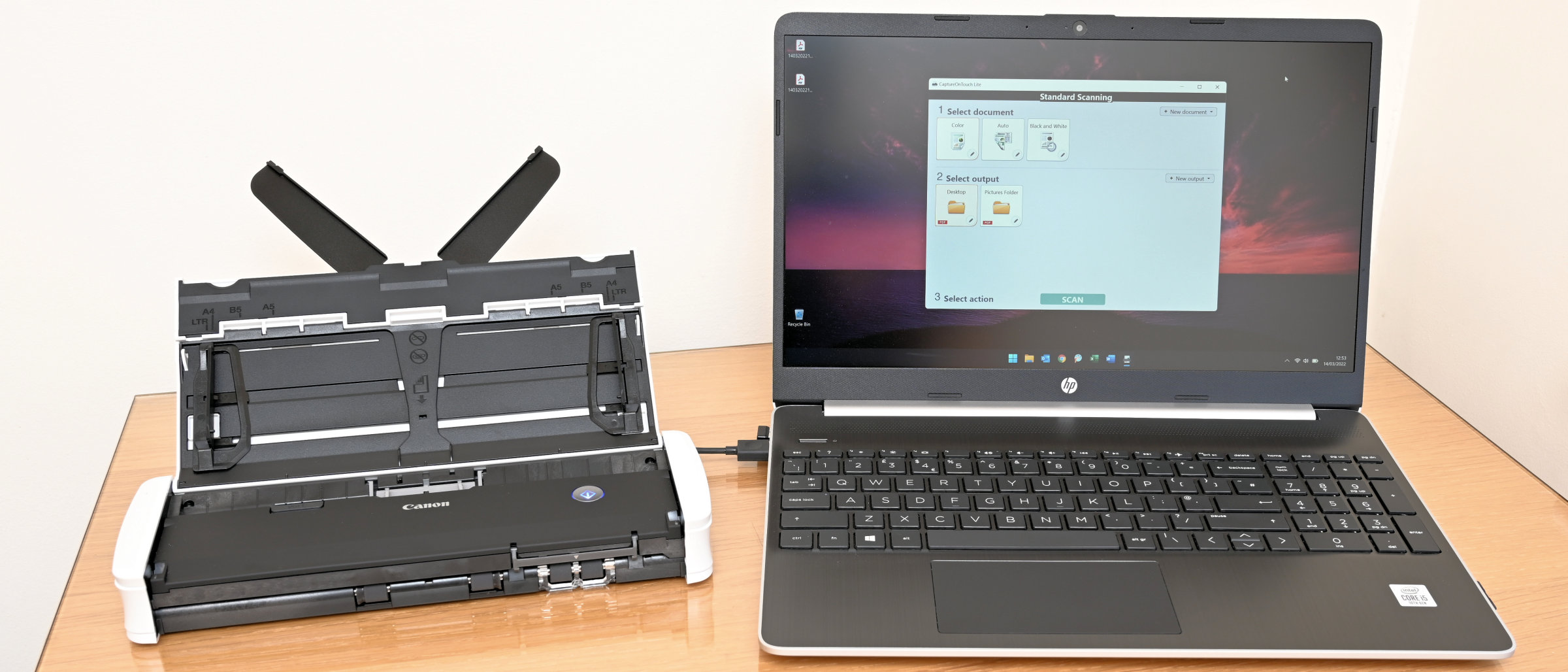Digital Camera World Verdict
A convenient solution for document scanning when you’re on the road, the Canon imageFORMULA R10 is lightweight and folds down to little more than the size of a pencil case. It’s USB bus-powered, so doesn’t need a separate bus supply, making it ideal for use with an Apple or Windows laptop. It’s fast and efficient in all but the highest quality settings, complete with an auto document feeder, single-pass duplex scanning and a separate motorized slot for scanning business cards. It’s great for document scanning but photo quality is overly vivid.
Pros
- +
Compact and perfectly portable
- +
No power supply needed
- +
Fast, double-sided scanning
Cons
- -
Overly vivid photo quality
- -
Pedestrian in top quality modes
- -
Pretty pricey
Why you can trust Digital Camera World
The Canon imageFORMULA R10 makes scanning simple, just about anywhere and everywhere. The ‘paperless office’ that we were imagining three decades ago never quite happened, and many of us still find the need to digitize printed documents for use in today’s computerized world. That can be a chore if you need to scan multi-page documents one sheet at a time, for example on a printer with a built-in flatbed scanner. And if you’re out and about, you can hardly take your printer with you. This highly portable scanner is designed for the journey and aims to keep things quick and simple.
Specifications
Scanner type: CMOS CIS
Max resolution: 600dpi
Max speed: 12ppm/14ipm
Auto document feeder: 20-sheet
Light source: RGB LED
Operating system: Windows 8.1>, macOS 10.12>
Interface: USB 2.0
Power supply: USB powered
Dimensions: 285 x 95 x 40mm
Weight: 0.9kg
Key features
Portability is the key attraction of this scanner. As such, it folds down to a compact carrying size of just 285 x 95 x 40mm and weighs less than a kilogram. Even so, there are plenty of useful features shoehorned into the diminutive design. It’s USB bus-powered, so there’s no need for a separate power supply, and the companion CaptureOnTouch Lite app for Apple and Windows computers is hosted in the scanner itself, so you don’t need to download any drivers or other programs. Just plug the scanner into your laptop with the supplied USB cable and you’re ready to roll.
Scanning itself is courtesy of a CMOS CIS (Contact Image Sensor) unit, so there’s no warm-up time. The page is fed through by a motorized transport system and, in duplex scanning modes, both sides of each page are scanned simultaneously in a single pass. What’s more, the built-in ADF (Auto Document Feeder) can hold up to 20 sheets of paper, which should prove ample for most jobs. If not, you can simply add extra batches of pages to each scanning job on the fly.
Further simplicity is on hand with automatic sensing for page size and print type, for example mixed text and graphics, auto de-skew and double-feed detection. The last of these gets around any potential problems of two sheets being fed simultaneously. There’s also an option to delete blank pages from the overall scanning job. Scanning resolutions of between 150 and 600 dots per inch are available, in either color or grayscale.
Documents are saved as PDF files by default, and you can also select various image file formats including JPEG, PNG and TIFF. As well as saving files to local folders of your choice, there are options for scanning direct to other apps, or to alternative destinations like Google Drive, Dropbox, OneDrive, an FTP server or for saving scans as email attachments.
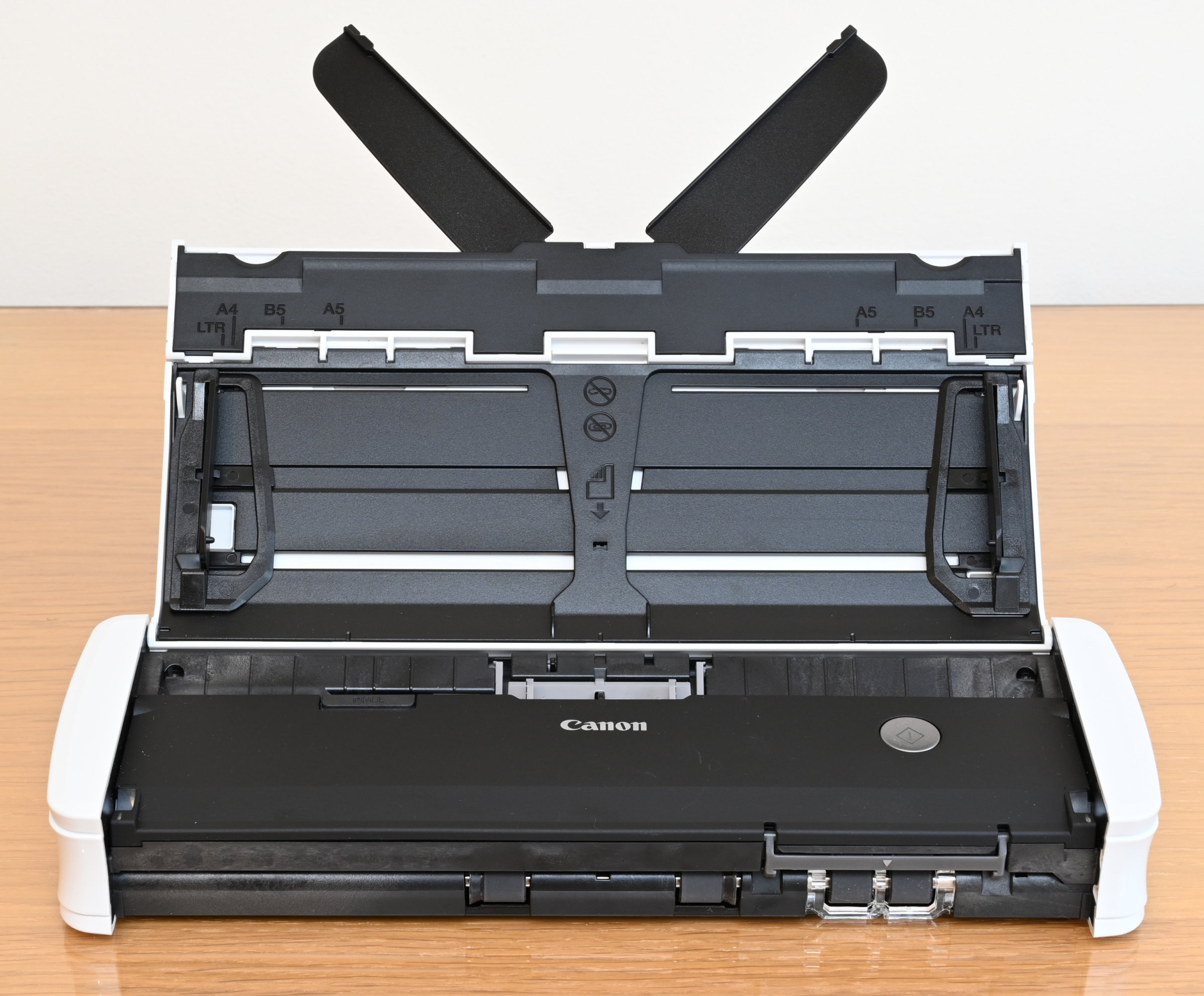
Build and handling
Although small and lightweight, the scanner has a solid build and construction feels of a very high standard. The front and top sections hinge upwards for use, forming the main paper-feed tray. Adjustable paper guides hinge up on either side, enabling a page width of between 50.8mm and 216mm. Page lengths of between 70mm and 356mm are catered to, with supporting arms that hinge up at the top.
With motorized paper handling and auto document feeding, all you need to do is place up to 20 sheets of paper in the feeder. For business cards, there’s a secondary slot in the front panel which, again, is fully motorized. This feeds the card in during scanning and then ejects it again afterwards.
The CaptureOnTouch Lite app is similarly simple, making scanning a 3-step process. In the Windows edition, you first click on a box for Auto, Black & White or Color scanning, then select the output for Pictures Folder, Desktop or Send to application, before finally clicking the Scan button. You can set up new ‘document’ and ‘output’ boxes with all the customized settings you need, and they’ll be saved for quick and easy future access.
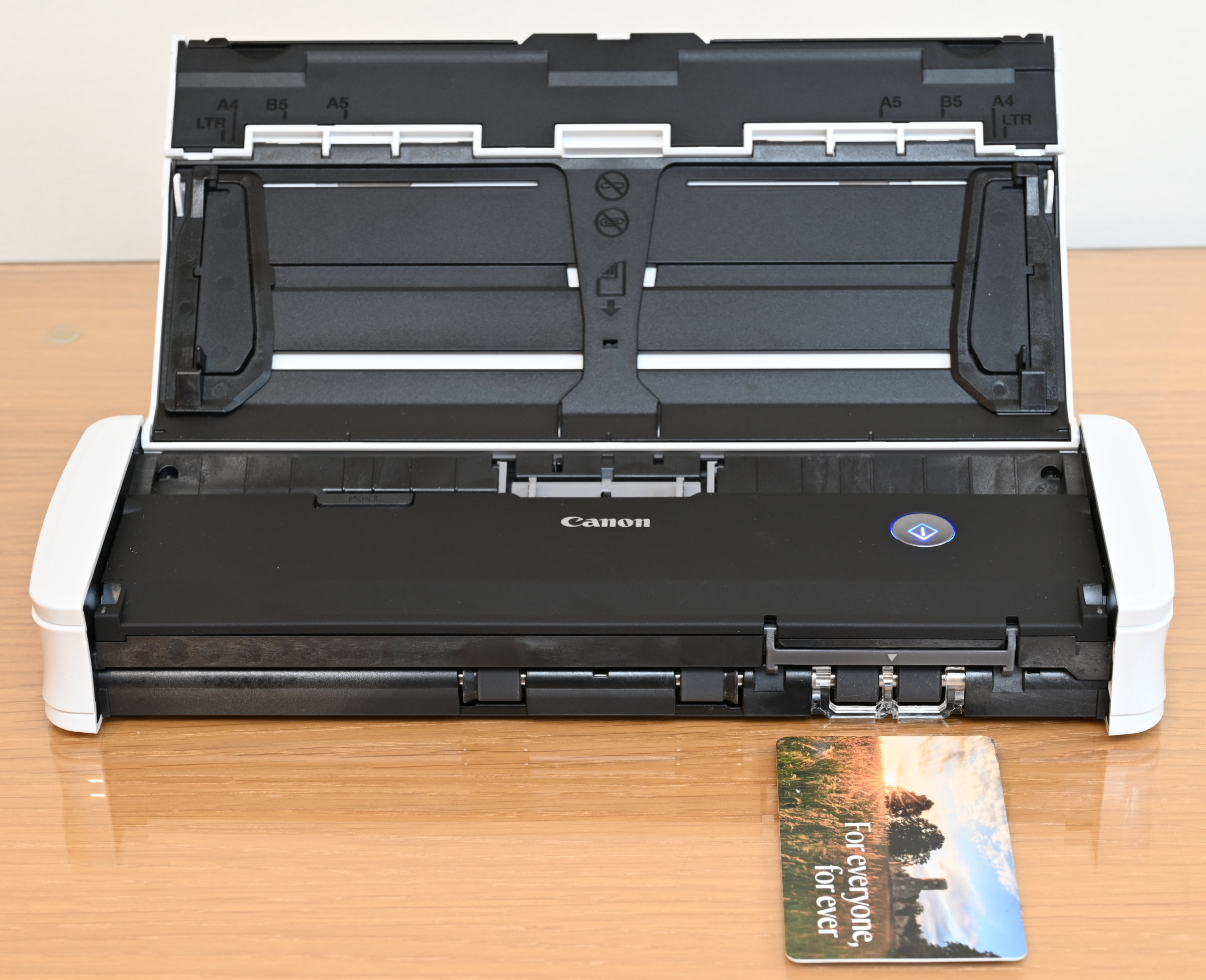
Performance
Simultaneous double-sided scanning with auto document feeding really speeds up the whole process. The scanner is pretty quick anyway, at around 12 or 9 double-sided pages per minute for mono and color respectively. We found that a single page took around 5 seconds for mono and 8 seconds for color at a resolution of 200dpi. Things only really slow down at the highest quality, 600dpi setting for best photo quality, taking around a minute to scan a full A4/letter sized color print.
Scan quality is very good for both mono and color documents, with crisp text and vibrant graphics. It’s not really designed as a photo printer, and image quality for glossy color prints is relatively poor, with results being overly high in contrast and saturation.
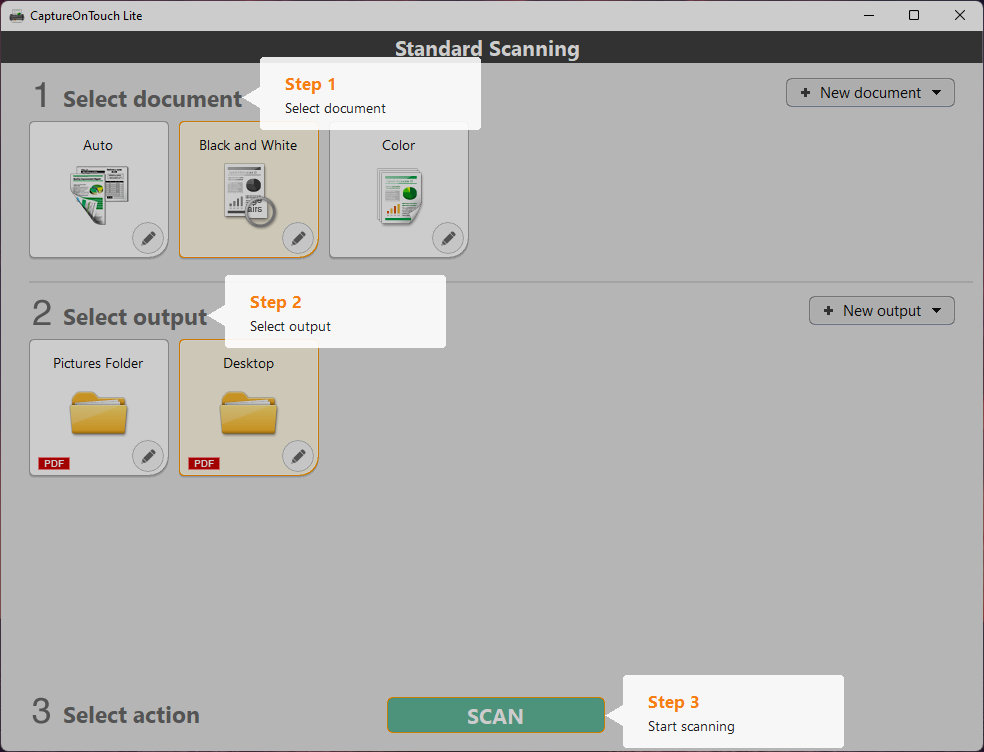
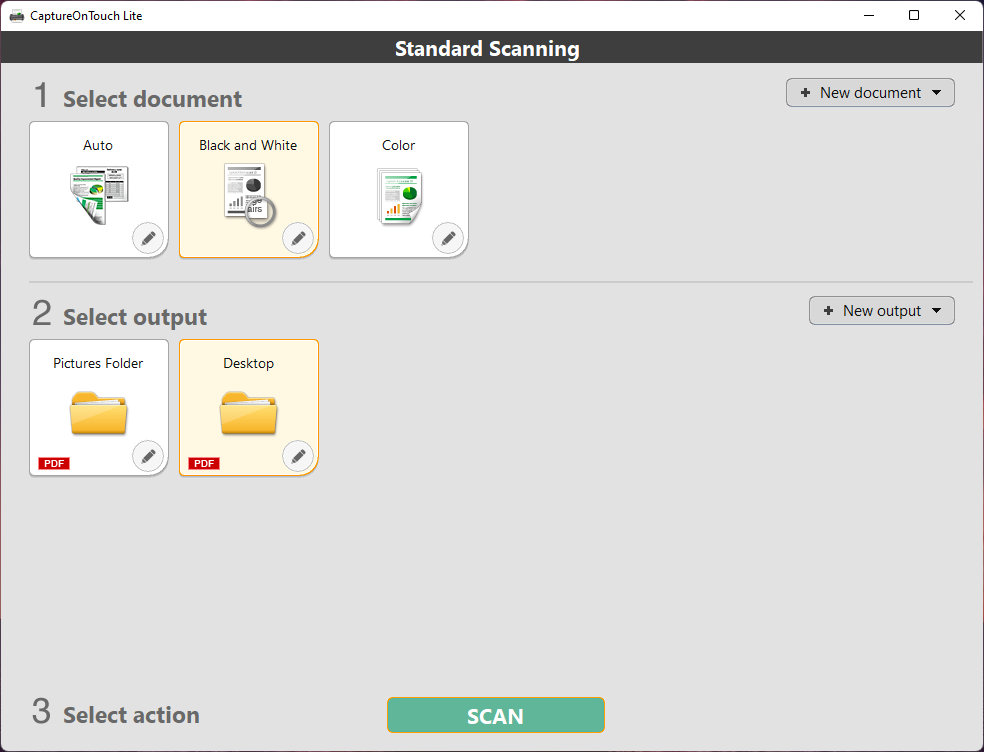
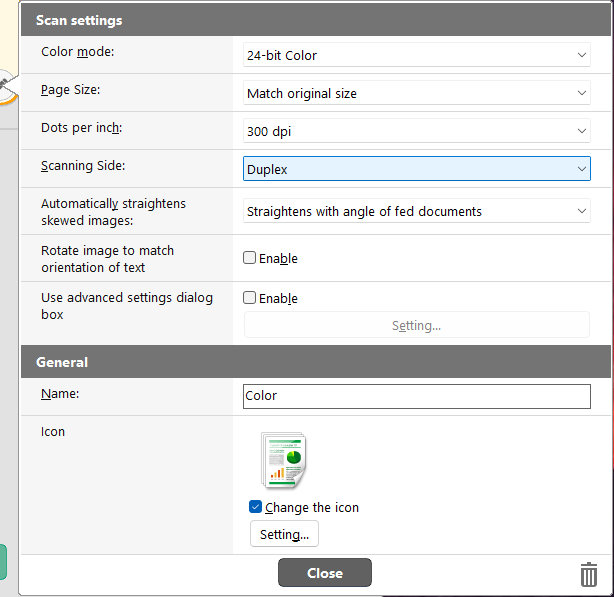
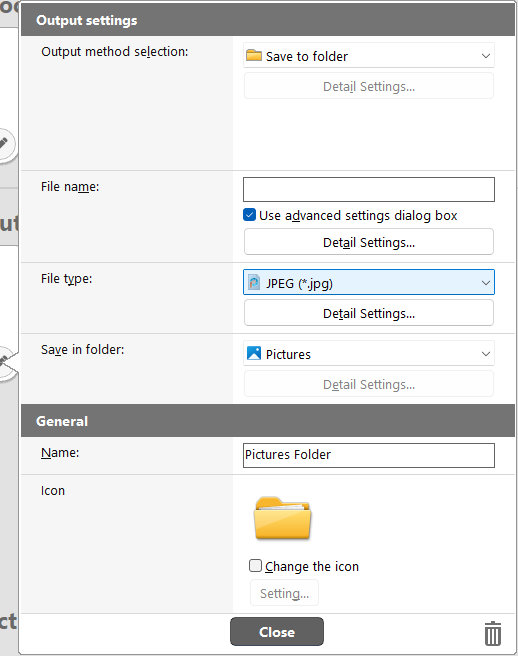
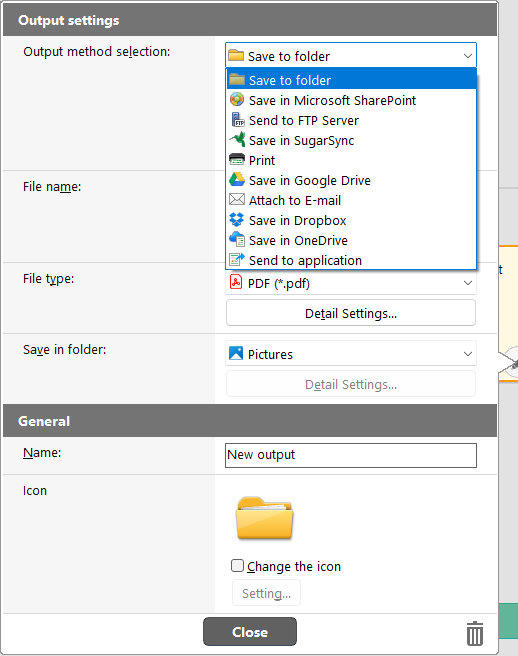
Verdict
The Canon imageFORMULA R10 is an elegant solution for scanning in the home office, if you want something you can fold away and stash in a drawer when you’re not using it. But it really comes into its own when you’re on the road, neatly automating the process of scanning anything from business cards to multi-page, double-sided documents with speed and ease.
Read more
Matthew Richards is a photographer and journalist who has spent years using and reviewing all manner of photo gear. He is Digital Camera World's principal lens reviewer – and has tested more primes and zooms than most people have had hot dinners!
His expertise with equipment doesn’t end there, though. He is also an encyclopedia when it comes to all manner of cameras, camera holsters and bags, flashguns, tripods and heads, printers, papers and inks, and just about anything imaging-related.
In an earlier life he was a broadcast engineer at the BBC, as well as a former editor of PC Guide.
